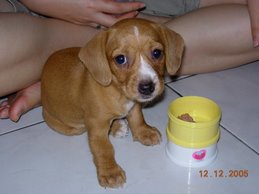Critical Tips On Rearing Calves - Simple Pointers For Beginners
Because a calf is the future of the herd, rearing
calves is one of the most crucial jobs on a farm.
A calf that is not properly taken care of in its
first few weeks of life will not meet target
weights, will be more susceptible to illness
and, consequently, will cost more to rear. The
following are tips on how to properly rear
calves.
Feeding milk
• Rearing calves on milk replacer or whole
milk should be done at least three days after
birth. For the calf's first three days of life,
let it feed on its mother's colostrum.
• Whole milk or milk replacer should be
introduced to the calf gradually over a period
of days.
• Avoid giving zero skim milk replacer to
calves under four weeks of age. Zero skim milk
replacer does not form a clot in a calf's
stomach. As a result, the calf's small intestine
can become overloaded.
• Skim based milk replacer, on the other
hand, forms a reconstituted milk clot in the
calf's stomach. This slows down the release of
milk proteins, which results in fewer incidents
of digestive upsets and scour.
• When giving calves milk replacer, make
sure that it is at the correct temperature, as
this affects the willingness of the calf to
drink the milk. Giving milk replacer at wrong
temperatures can also lead to bloating and fat
breakdown.
Dehorning and teat removal
• Dehorning should be carried out at three
to four weeks of age.
• Use a local anesthetic when dehorning.
• Perform teat removal at the same time as
dehorning.
• Only veterinarians or experienced
operators should be allowed to perform these
procedures.
Weaning
• Weaning is one of the most stressful
stages in the process of rearing calves. Try to
lessen the stress by weaning calves at eight
weeks of age.
• Make sure that the calves are healthy and
disease-free before attempting weaning.
• Make sure that the calves weight at least
65 kilos before attempting to wean them.
• For at least three days before weaning,
make sure that the calves consume at least 1
kilo of calf mixture per calf per day.
Housing
• When rearing calves, make sure that they
are in a clean, dry, and warm area.
• House calves younger than three months
away from older calves.
• Calf housing should be in a location that
encourages close observation and quality care.
• Calf housing should minimize disease risk
and support high growth rates.
• Calf housing should be easily
disassembled for cleaning.
Preventing illness
• After a calf is born, make sure that it
gets enough colostrum.
• When preparing milk replacer, make sure
that you follow mixing instructions to the
letter.
• Make sure that calf pens are draught-free
and that beddings are dry.
• Make sure that calf pens have effective
ventilation.
• Hose down and disinfect calf pens before
putting in a new batch of calves.
• Avoid putting calves of different ages
and from different sources in the same calf pen.
• Thoroughly clean and disinfect each calf
pen at least twice during a calving season.
• If sickness from E. coli or other
bacteria is a persistent problem, vaccinate
against them.
• Make sure that calves don't get too
stressed out from dehorning.
• If you are rearing calves together in one
shelter, isolate calves that are sick as soon as
possible.
----------------------------------------------------
Are you planning to learn more tips about raising
calves and cattle? Raising cattle can improve
quality of life and provide great satisfaction
and responsibility for families. Explore your
options and then decide. If you would like more
tips on breeding cattle and how to raise cattle,
just visit: http://www.howtoraisecattle.com
EasyPublish this article: http://submityourarticle.com/articles/easypublish.php?art_id=269196














.jpg)






.jpg)

0 comments:
Post a Comment